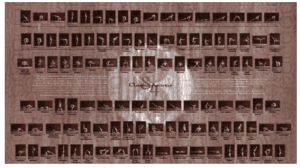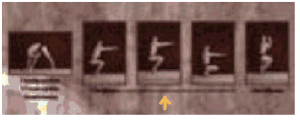Advanced Postures (APs) Vs. Beginner Postures (BPs)
Bikram Yoga is divided into 2 types: 84 APs and 26 BPs. The 84 APs include all 26 BPs. Although both types of yoga are taught by Bikram Choudhury–founder and president of Bikram Yoga, those who know about APs are fewer than those who know about BPs. This article will answer the following 3 questions:
1. Why do fewer people know about APs?
2. Who performs APs?
3. How does the APs class differ from the BPs class?
1. WHY DO FEWER PEOPLE KNOW ABOUT APS?
The reasons are greater restrictions enforced on APs and insufficient information provided about them:
Greater Restrictions. Only 2 people in the world are authorized to teach APs: Bikram Choudhury and Emmy Cleaves–Bikram’s student and principal teacher of his yoga. In contrast, Bikram Yoga practitioners throughout the world are authorized to teach BPs. Another restriction is teaching locations: APs are taught only at Bikram’s Headquarters in Los Angeles, CA, but BPs are taught in 6 continents.
Insufficient Information. Below is a picture that exemplifies the inadequate information available to a Web surfer who seeks free information about APs. As of May 29, 2013, the largest size of this picture that Google provided is 870 x 480. When viewed at its default size or at a zoomed-in size, this picture shows some, if not all, of what the postures look like; however, none of the words except for the title is readable when viewed at the default size or at any zoomed-in size.
This picture’s title is “84 Classic Asanas” (asana means posture) but this picture has 110 images. Upon closer inspection, one can see that some of the images are seemingly grouped together using upward-facing square brackets. Below is a zoomed-in example of images 5-9 counted from the right in the 2nd row:
Within this zoomed-in view, the yellow arrow points at the only existing bracket, which seems to group the 3 middle images together as though they’re 1 asana; however, whether or not they represent 1 asana remains unverified because the only readable text is the title. Also, other brackets do not clearly and consistently indicate which images are grouped together; an example of this is shown in the zoomed-in view below:
These are images 4-10 counted from the left in the 1 row. A bracket seems to group 4-9 together, but then continues past 10. This leads to a question: Why does the bracket look as though it’s continuing past its end? The question remains unanswered, though, because not enough information is available.
In contrast, this website provides the following information about all 26 BPs:
- Names in both English and Sanskrit
- Colored photos showing the end results
- Purposes and benefits
- How to perform them
Who performs APs?
Here’s a 5-part answer:
- Bikram and Emmy, the only 2 people authorized to teach APs
- Tony Sanchez, student of Bikram, and holder of the 1994 and 1996 World Cup Yoga Sport title
- Experienced yoga students who attend an APs class (they’re invited to an APs class because they’re training for the Yoga Asana Championship)
- Yoga teachers who practice APs and whose students are invited to these teachers’ APs sessions
- People who perform APs as demonstrations
How does the APs class differ from the BPs class?
They differ in 2 ways:
- Teachers of APs perform each posture, but teachers of BPs use dialogue.
- Every APs class requires doing 84 postures in about 90-120 minutes, but every BPs class requires doing only 26 postures in 90 minutes.
Conclusion
Although Bikram teaches both APs and BPs, he enforces greater restrictions on APs; this restrictionr esults in not enough information provided about them. A final example of insufficient information provided about APs is a YouTube video called 84 Asanas that features Tony Sanchez:
http://www.youtube.com/watch?v=lN9_OGuzrH8
Between 5:18 and 5:42, Mr. Sanchez confirms that an advanced system called Yoga Challenge 3 takes between 90-120 minutes to complete and is based on 84-90 different exercises. However, he doesn’t explain what he means by “exercises,” and this absence of explanation further demonstrates that the information which is provided about APs is lacking.


